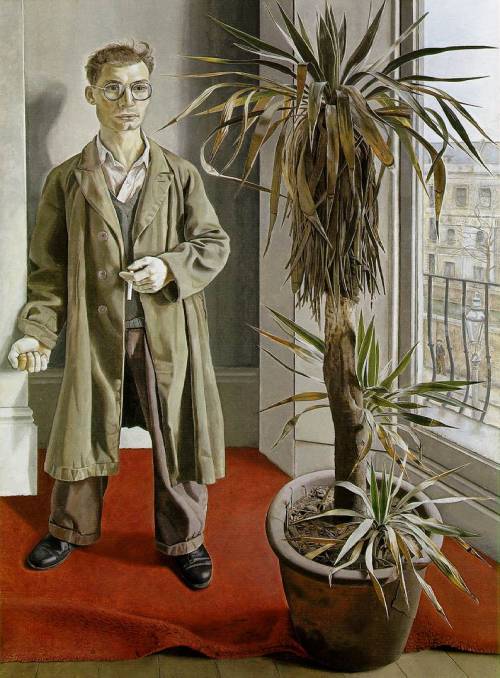Walker Art Gallery, Liverpool - Finding a Modern Style
During the time of great social changes in Europe in the first part of the 20th century where rival political groups were offering new ideas about how to live in the modern world, British artists developed many different styles. Some British artists saw themselves as part of the new modern art movements that were developing as a response to the economic, political and social changes, while others stood on the sidelines developing their own unique styles.
Prince and Princess, Ben Nicholson, 1932
Painted on a scrap piece of wood, objects like a playing card are just recognisable in this painting, in the middle of random shapes. The heads are portraits of Nicholson and his future wife, Barbara Hepworth.
On the left: Part of a tea set, Susie Cooper, 1932.
On the right: Tea for Two Set, Clarice Cliff, 1930.
A closer look at the Clarice Cliff tea cups
and the Susie Cooper teapot on the left and the Clarice Cliff on the right
Susie Cooper tea cups
Fishing Nets, St Ives, Jack Coburn Witherop, 1939
Amity, Bernard Fleetwood-Walker
Two teenage friends enjoying a summer picnic. The country setting suggests the innocence of youth. The sleek lines and flat areas of colour show how some artists interpreted the Art Deco style.
Landscape of the Moon's Last Phase, Paul Nash, 1944
This is a view of Wittenham Clumps, two round hills near Oxford. There is a strange sense of space in the picture. Nash used binoculars to look at the hills from his friend's garden and this made them appear much closer than they really were. Nash called his fascination for this view of the hills 'his appetite for monstrous moons'.
Under the Hammer, Robert Bevan, 1914
Like Gauguin and the Post-Impressionist painters that he admired, Bevan used flat blocks of solid colour and strong outlines in his paintings.

White Houses, Ville d'Avray, George Seurat, 1882-83
The simplified shapes in this painting are contrasted with complex colours. The bush on the right is painted in varying tones of green with flecks of red, blue and orange. These complementary colours when put together, create a more vivid optical effect. Seurat developed this 'divisionist' method more scientifically, applying it rigidly and on a larger scale. He used dots of pure colour and created the 'pointilliste' style for which he became famous.

Nightfall, Luxor, David Young Cameron, 1910
The silhouette makes a dramatic landscape. The small figure in the centre highlights the vastness of the night sky.
Blackberry Gathering, Elizabeth Forbes, 1912
Forbes painted local subjects full of light and atmosphere. This was her last picture as she painted it while she was dying of cancer. It is a good example of her loose brush-work.
Interior at Paddington, Lucien Freud, 1950-51
The setting is Freud's London studio. The man is his friend Harry Diamond, a Cockney photographer. Freud uses a realistic style but the sense of isolation and the spiky plant create an uneasy atmosphere. The painting took six months, Diamond posing for it almost daily. He complained that Freud made his legs too short. Freud said they were too short.
The Waterloo Dock, Liverpool, Laurence Stephen Lowry, 1962.














No comments:
Post a Comment